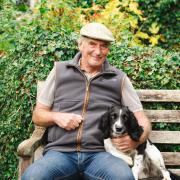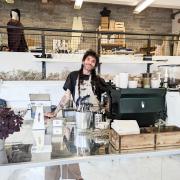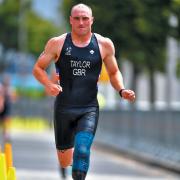Have you witnessed the unique May Day custom of the Minehead Hobby Horse? Join us at the coast for a look at the joyous spectacle – which sees three different hobby horses parading in the town.
One of the joys of living in Somerset is experiencing the customs and traditions that punctuate the year’s calendar. May Day certainly doesn’t disappoint, with some of the best loved traditions such as the May Queen, maypole dancing and Morris Dancers. But few are as bright, vibrant and eccentric as the custom of a brightly decorated hobby horse being paraded around the town. And that’s just what you’ll see if you visit Minehead over the first few days of May.
Whilst hobby horses have been a familiar sight in carnivals and folk dances since medieval times, the origins of the Minehead Hobby Horse are unknown. As Julian Luke from Minehead Museum says: ‘the origins of the tradition are lost in the mists of time.’ Some say that it derives from the pagan May Day and Green Man rituals and spring fertility rites. However, many locals attribute it to a tactic that was used to frighten off Viking raiders, by looking like a knight on horseback or part of some mythical beast. But as Julian says: ‘a number of oral traditional stories exist but as none of these can be proven, the origin is always likely to remain a mystery.’ Perhaps that is all part of the appeal, but whatever its history, the hobby horse certainly makes an impact on the town.
The Minehead Hobby Horse resembles a small, upturned boat rather than a horse – in fact the original horses were probably made from an upturned coracle (small boat) with a hole made in the centre for a head and then dressed with sacking and ribbons. Nowadays they are made from a lighter weight, Somerset willow frame, covered in hessian and decorated with colourful fabric strips. It has a rope tail which originally would have ended in a cow’s tail, and for the final heart stopping effect, the carrier’s face is covered by a garish mask.

The hobby horse is paraded noisily around the town, accompanied by a ‘crew’ including accordion players, drummers and money collectors. It begins on the night of April 30 where the horse appears for a short trip to prepare people for what to expect over the next three days. May Day is the main event beginning at the Quay outside the Old Ship Aground pub at dawn and ending up at Dunster Castle in the evening.
On May 2, the horse can be seen around the town, interacting and dancing with onlookers, and the tradition concludes on May 3 with the ‘Bootie Night’. The horse dances and chases the public, lashing them with its tail, before a ‘victim’ is caught and held by their arms and legs whilst the horse bows over them ten times. The bootie takes place in Cher Steep, on the outskirts of Minehead, and then again in the centre of town where the horse takes its final bow for the year.
If all this wasn’t enough, there is not just one Minehead Hobby Horse, but three: the Original Sailor’s Hobby Horse, the Traditional Sailor’s Hobby Horse and the Town Horse. The custom for all three is the same but they are effectively breakaway groups, resulting from a split over style and personalities. Both the Traditional and the Original Sailor’s groups claim authenticity whilst the Town Horse was introduced at a later date in the early 20 century.

The three groups follow their own programmes, meeting just twice over the festival: at Whitecross at 6am on May Day, and for ‘bootie’ night on May 3. The Original Sailor’s Horse provides an outline route in advance whilst the Traditional Sailor’s Horse crew like to keep a certain amount of surprise and excitement, so the public don’t know exactly where they appear. ‘This is in keeping with the tradition,’ explains Paul Wilson, who has been attending for the last 52 years and is now actively involved with the group. ‘Some of us remember vividly as children hearing the drums and being excited to look for the horse.’
Paul now helps with the planning and preparations for the festival and has been one of the Traditional Sailor’s Horse group’s main musicians for the last 25 years. The music is a key part of the tradition. ‘When I first heard the tune in 1972 and saw the horse I was completely smitten,’ says Paul. ‘The tune and cross rhythms on the drums have a musical energy unlike any other May Day tradition in the UK.’ The main tune played is a version of "Hey Joe, The boat is tipping over", with different adaptions played over the four days. Paul plays the piano accordion for the group, complementing the drums and melodeons. ‘We sometimes welcome a clarinet, saxophone, flute or other blown instrument, but this is always very carefully curated, so the spirit of the tune and energy is maintained.’

Jodie Thresher Walton is a custodian of the Original Sailor’s Hobby Horse, ‘this means the horse is my responsibility when out and about, alongside the amazing crew who volunteer every year,’ she says. There are two other versions of the horse in this group that join in the fun on the Alcombe night, May 2. There is the Sailette, ‘a pink and white horse built for ladies,’ says Jodie, and a small horse called Baby Quay. ‘This was made for the children. We have so many involved, and they cannot wait for the day they are big enough to go in the Sailor’s Horse. It is so important to keep this amazing tradition going and Minehead children are the future.’
Paul agrees. ‘The sense of place, of occasion and of pride in our own identity are just three things that make this tradition so important. It is unique to Minehead and, although there are other hobby horses around the UK, none are called the Sailor’s Horse and very few have the same long unbroken tradition.’ Even during the pandemic in 2020, the Traditional Sailor’s Horse group took legal advice and were able to take the horse out onto the streets.
If you are in the area, follow the music and chances are you will find one of the horses. But if you are unable to make it to Minehead for the May Day festivities, you can see a Sailor’s Hobby Horse, along with some previous masks, on display in Minehead Museum, open every day except Monday. Admission free.



























